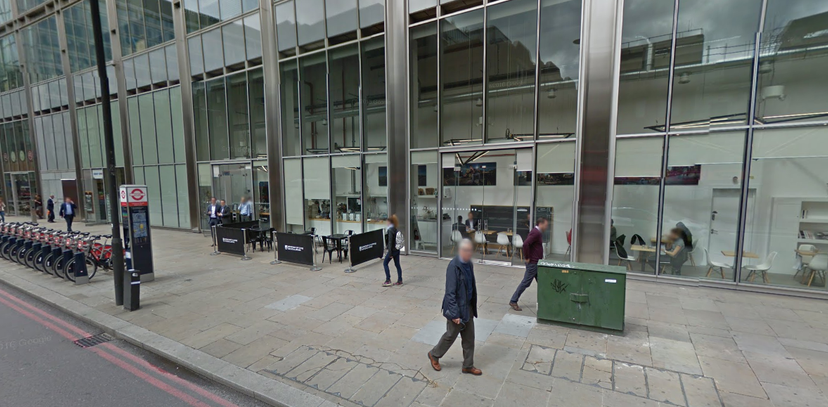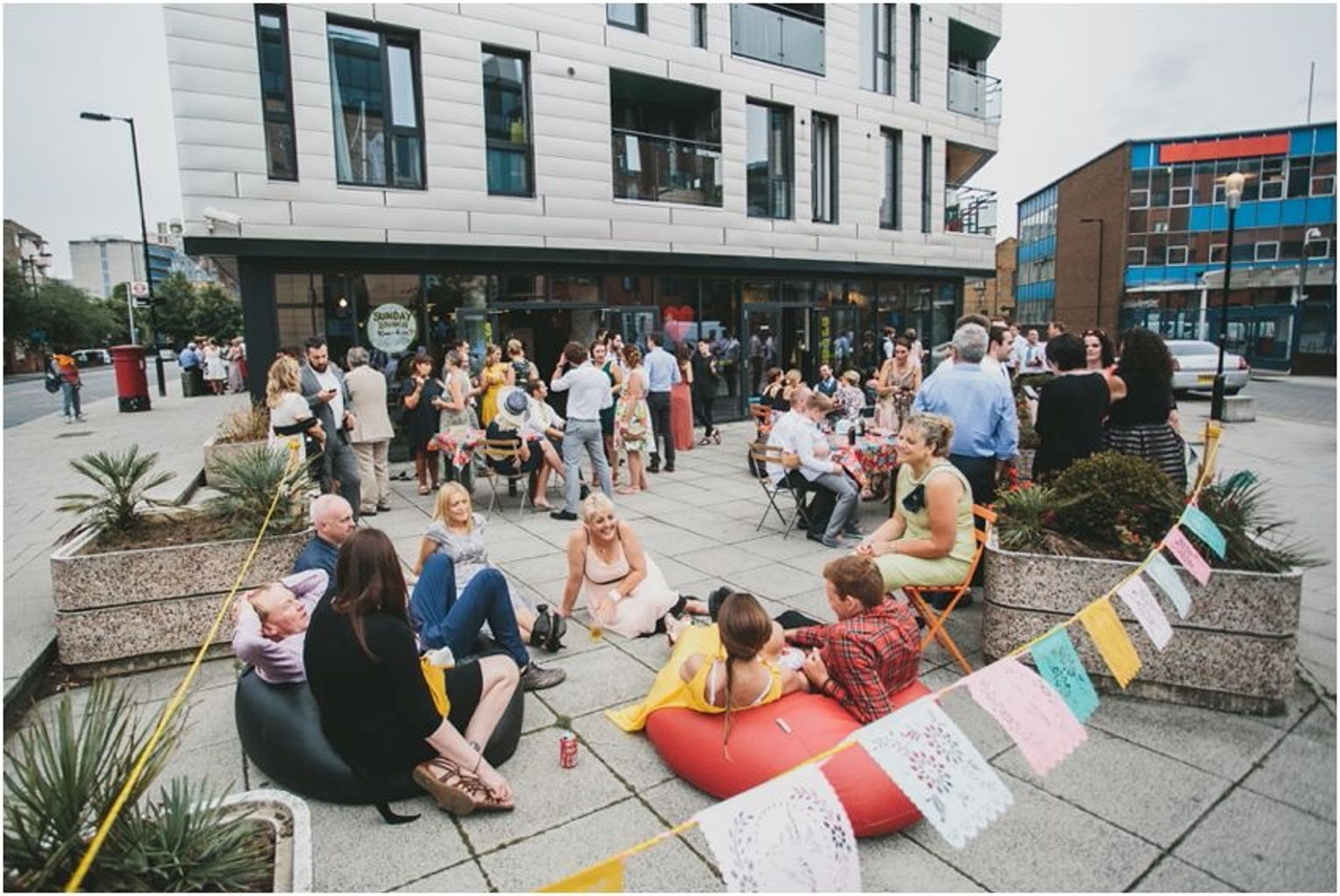
Central London is transforming with more and more construction and newly opened office-towers. As monolithic buildings increasingly shape our streetscape we need to think about what it means to build places for people.
Recent studies have shown that architectonic superstructures of glass and steel impact on our wellbeing and risk creating an experience of isolation[1]. Some of the new build glass towers do not only stray away from the human scale in their size but also in their accessibility. Glass facades may provide a visual opening between inside and outside, but locked doors, porters and empty entrances exclude the life on the street.

Community spirit, photo credit: El Vergel
We all perceive the world around us differently, influenced by our bodies, our history and social relations. The human scale cannot be understood as an objective measure of physical scale.
The US based Project for Public Spaces have worked with the notion the human scale in different contexts, and their definition separates this from the height or materials of a specific building. For PPS, the human scale is about the community and social activities.
“The human scale in any given community depends upon what that community perceives as human scale.”(Stephen Burke, PPS, 2016)
When the architecture of new buildings closes itself of from the streets, it risks creating “dead zones” in existing neighbourhoods. Instead of adding to the local buzz they remove the street life. Danish urbanist Jan Gehl has observed that people walk faster in front of a blank façade to avoid the unpleasant monotony of the street. Similarly, neuroscientist and radical geographer Colin Ellard has found that “streets with no game” increase sadness, addiction and disease-related stress. He argues that by changing the structure of a building’s bottom three metres, we can impact on the manner in which we use streets.
“Not only are people more likely to walk around in cityscapes with open and lively façades, but the kinds of things that they do in such places actually change. They pause, look around and absorb their surroundings while in a pleasant state of positive affect and with a lively, attentive nervous system.” (Colin Ellard, Places of the Heart, 2015)
So why is it that the human scale is often being forgotten in our cities? To be able to create better communities we need to continue to ask: where are the people and how are they included in the layout of the streets? Thinking about how buildings invite people to participate on a street level is key for making thriving communities. Building successful places is about more than bricks and mortar, it is about keeping the streets accessible and alive.
Social Life will be working with Colin Ellard and the Canadian Urban Realities Laboratory to explore the psychology of streets. We will be running a series of walks to map our reactions to the built environment, as part of the Unusual Suspects Festival.
This blogpost was written by Emma Nielsen.